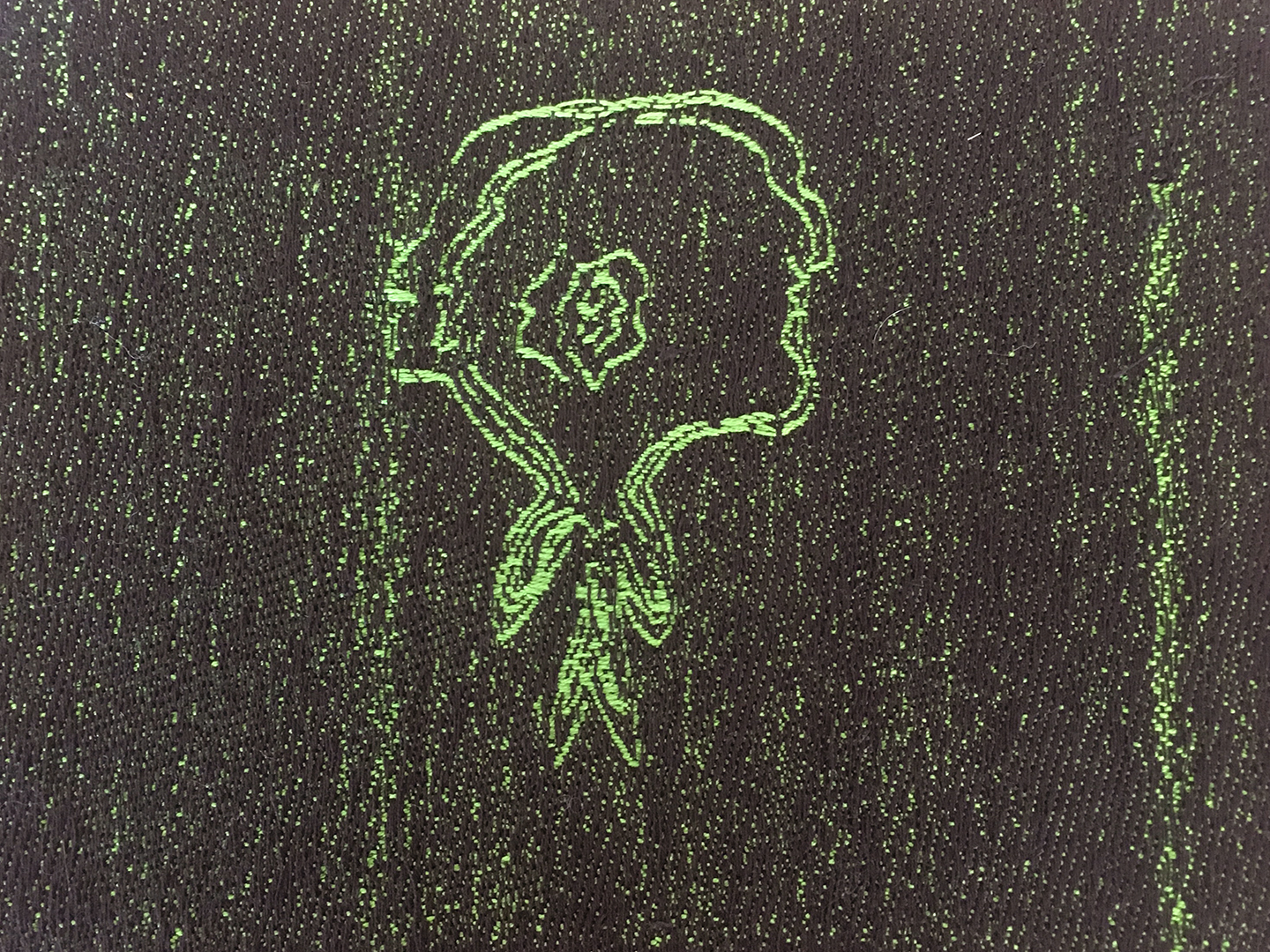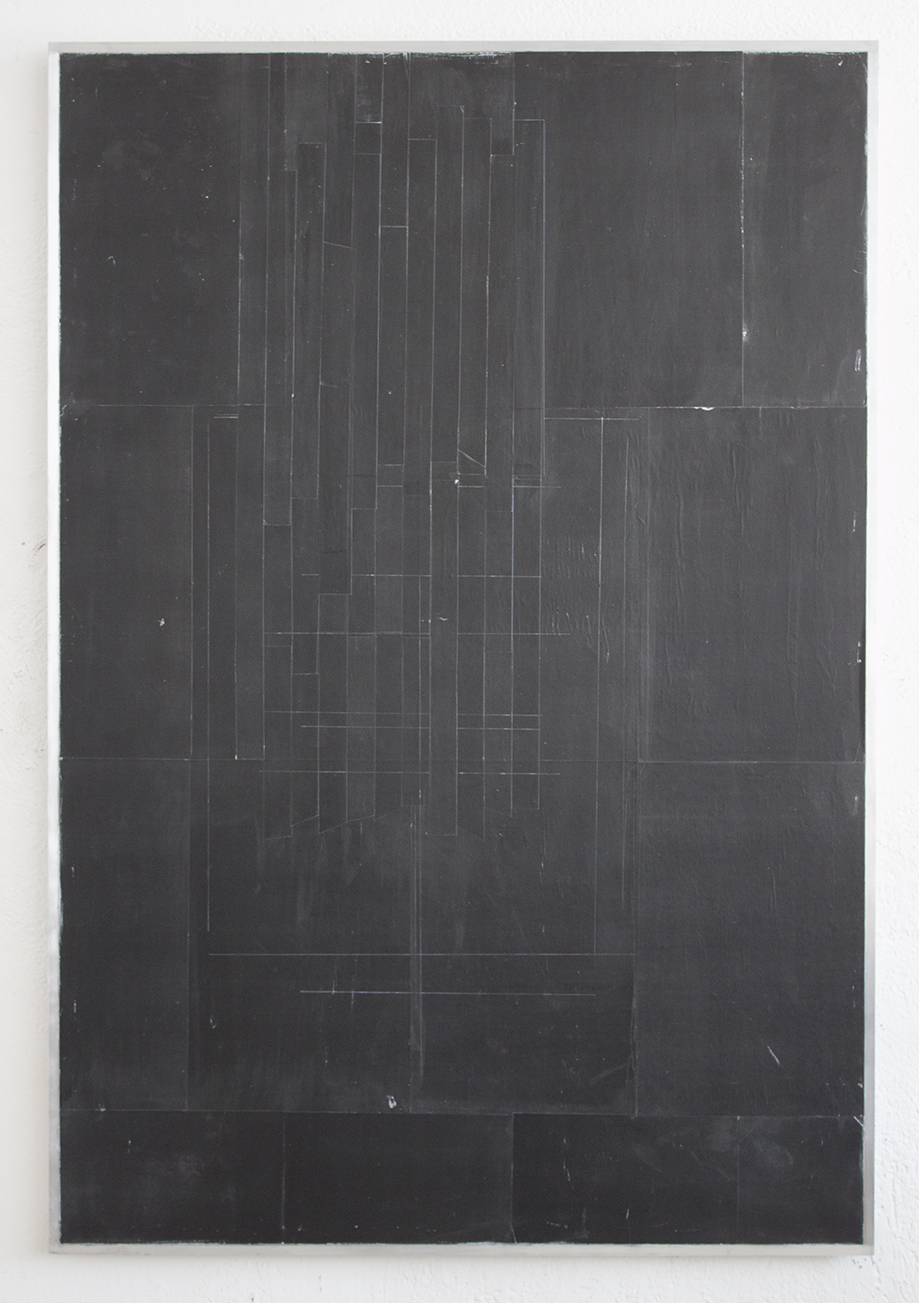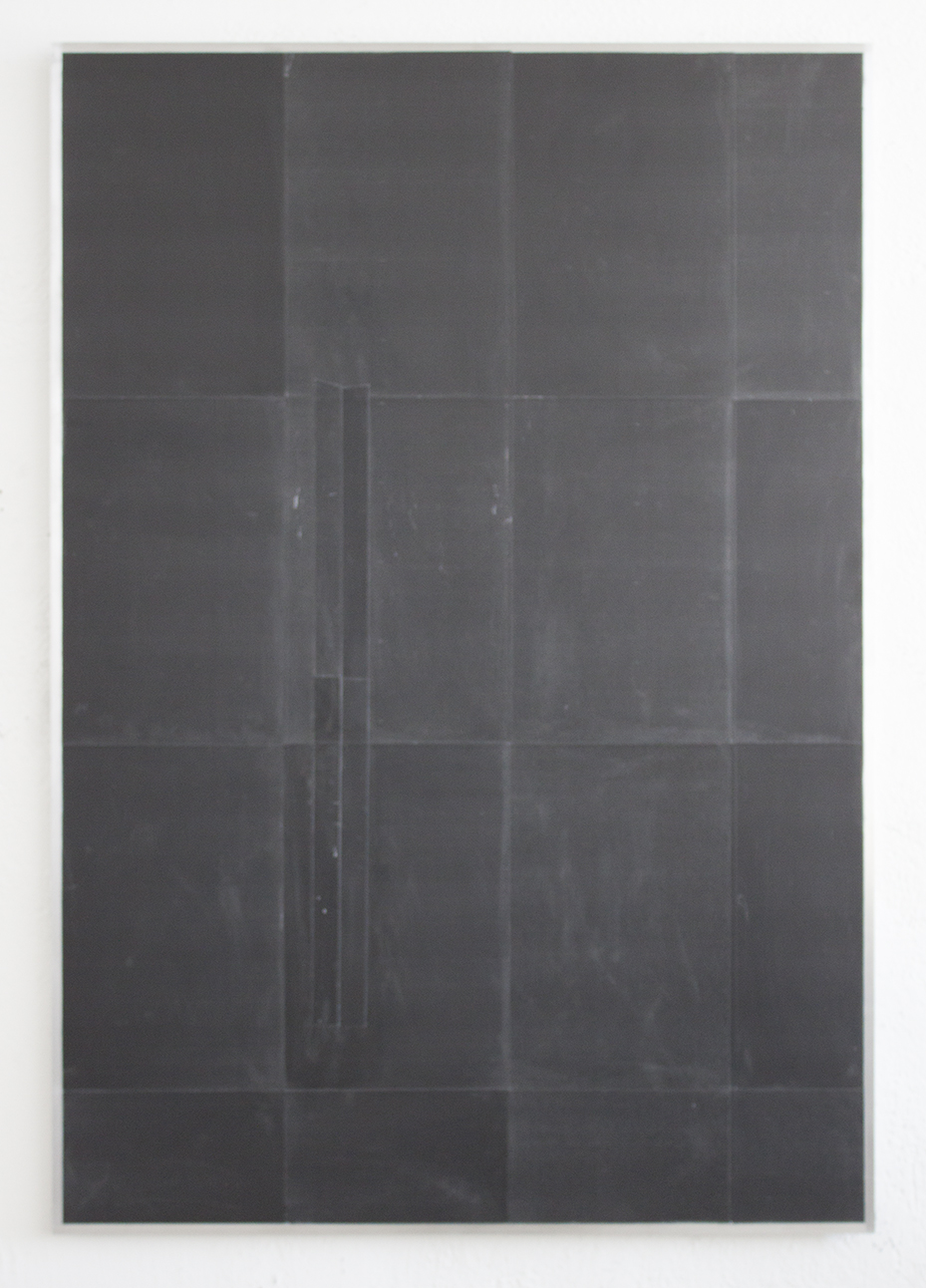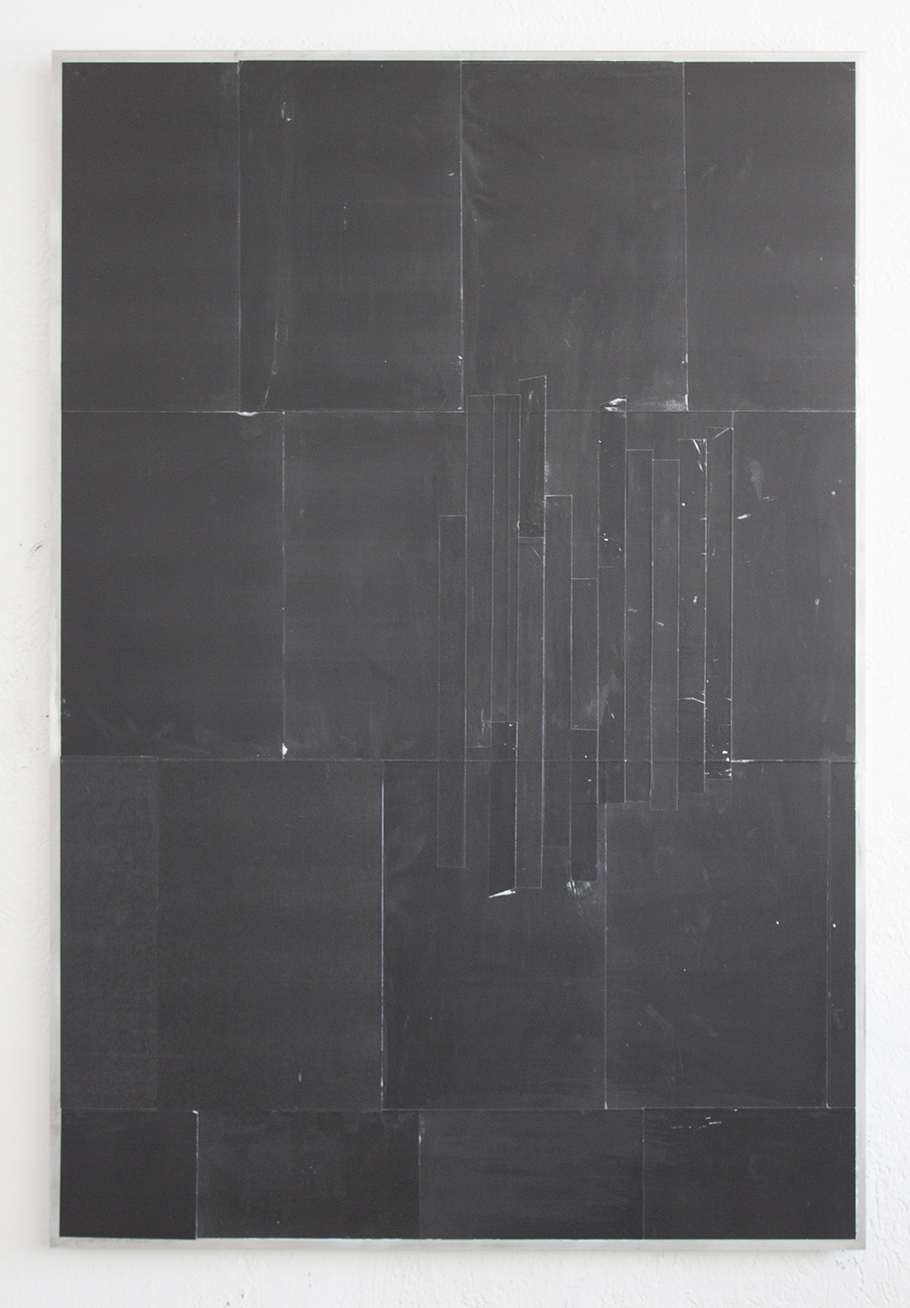In her book Socrates’ Ancestors Indra Kagis McEwen explores the relationship between making and philosophy, illustrating how ancient Greeks interpreted the universe, or kosmos, as being governed by systems that could be visualized in form. One of the things McEwen outlines is the direct relationship between the act of weaving and the Greek concept of “epiphany” which denotes both the surface of a thing and its coming into being, its appearing. (44)
McEwen writes, “The word for weaving, or plying the loom is hypainen which literally means to bring to light or make visible, and the word for surface is epiphaneia... It is the woven cloth or perhaps its very weaving that makes Earth with all its variegated scintillating patterns appear.” (54) She goes on to detail how it is the marshaling of craft, technology and knowledge in weaving—as well as dancing, shipbuilding and architecture—that in their use of pattern and carefully assembled parts continuously manifest cosmic order and outline the forces that govern life.
For me, Socrates’ Ancestors frames an important principle of art: its being an ontology based on an ongoing and never-ending process of experimentation and refinement or, as I discuss below, a system perpetually “in development.” This idea of artwork being unfixed or indeterminate can be explored in formal ways by exposing raw edges or showing the engineering of the thing itself. Using collage and/ or different methods of editing, an artist can foreground the role of time and keep the work in a perpetual state of becoming. In other words, the way materials correspond and measure making, invest a constructed object with an innate rhythm or score that can be said, like in McEwan’s epiphaneia, to underlie its appearing. In this emphasis on the dynamic life cycle of a crafted thing, McEwen’s seems to link the argument for utility with contemporary technologies for recording and broadcasting information.
Weaving prefigures not only the digital but also something more basic, indeed structural; for me it is this emphasis on edges, on sequential storytelling/ animation, and the interlacing of fragmented bits, that remains a generative and chaotic realm for exploration. It raises the question not only of material resonances, but of our relationship to organizing time, as the cadence of mass communication becomes the dominant basis for a contemporary epiphaneia.
In my project Our Founding Fathers Who Art in Heaven (two frames of 30 total pictured above) I tried to engage both this conceptual legacy of weaving with the intention of also telling a rudimentary story. To do so I consciously approached the process of weaving as process of recording, using the digital loom to create individual frames that together could be sequenced in such a way as to suggest both time and eminence. In this way I both anticipated a translation of the woven material back into a digital format (as a short movie or GIF) as well as linked to historical methods of storytelling using panels such as in the 14th century tapestry the Apocalypse d’Angers and much later in stop motion cartoons.
Below are select excerpts from the lecture I gave while a resident of the Weaving Lab at the University of Wisconsin, Madison, where I tried to tie the above interest in pattern and storytelling with my previous bodies of work.
________LECTURE EXCERPTS______________
How can weaving, one of humanity’s oldest technologies, be so topical to contemporary digital culture? The question, indeed the very definition of weaving itself, underscores a central theme of my own research into material experimentation and indeterminacy... as an analogy for an artwork being “in development.” When I say “in development,” I am specifically referring to photography and my reading of art historian Kaja Silverman’s book The Miracle of Analogy and her thesis that a fixed image can, in fact, be considered in an ongoing and unfixed state of perpetual becoming. How one achieves this state of becoming, or rather, highlights its perpetual development, is one definition of art making.
Furthermore, the state of being in development is for me a vital and critical space in which the ethics of being human become more articulated. It is a space where cultural signifiers are allowed to gestate and metastasize in ways that are both complex and progressive. They remain abstract and open, despite their being rooted in history and real life.
Nick Herman Ecstasies (Bird Dance), 2013, Inkjet prints mounted on fabric, 50 x 57 x 5 in. (artwork © Nick Herman) The images in this series have been appropriated from blogs documenting indigenous/tribal dances and other rituals performed for international tourists; printed and erased multiple times and tiled to create larger composite image.
While I have not previously used weaving in my work, I have often understood it as a important parallel framework mirroring many of my ideas; I recognize that the interlacing of warp and weft mirrors other aspects of my practice namely the way I use collage, photography and book making to explore structural strategies for compiling information and telling stories. What links weaving and these other, often more solid or didactic mediums is my interest in revealing the underlying logic or engineering of the thing. In other words, one of the powers of weaving is that it is both a noun and a verb.
Whether we use the language of craft or ecology or physics or religion… all these paradigms consist of patterns that describe their logic and maintain their meaning vis a vis a greater arrangement. In this way I am able to visualize weaving structure as both a material and a message. For some of you this phrase is familiar... it is a foundational thesis advocated by the pioneering media theorist Marshall McLuhan.
Nick Herman, URANANTENNA, 2016. Collage mounted on board. 4 x 5 in. (artwork © Nick Herman)
For McLuhan, the structure of a thing in the world possesses an intrinsic truth; the medium is part of the thing’s value or meaning. It’s an obvious assertion, but for McLuhan, writing in 1964, new mass-media, especially television, was evolving to be more visual, changing the way humans communicate with one another. A large part of that change was the pacing at which information was distributed. His observation and prediction regarding the impact of speed, as one of the primary “messages,” in addition to appropriated imagery and collage, has clearly become our current reality. We are a totally visual people living in a cut and paste world, and the means of distributing this endless information, the medium of broadcasting, is the most powerful and significant modifier in our culture.
Weaving made this point thousands of years before. Disparate strands when woven together take a simple isolated bit of information and create a story, but one that is never totally fixed because its constituent parts are never far from view.... As such weaving is the progenitor of the computer... this we know... but more simply it also is a mirror for the way the material world fits together. In this way weaving illustrates how complex things can be communicated; the warp and weft functions like a transmission... every square inch possesses a germ of its fundamental message... the weave structure itself.
What do both structure and transmission have in common? For me the answer is their “edges.” The edges of two materials coming together denote a relationship and by analogy, they suggest a process… a process of development.
In my work I explore this using both still and animated media, where the edges are illustrated by tiling (seen above in the photograph) or something called frame rate (seen above in the GIF). Frame rate reveals McLuhan’s truism also... showing the basic structure of the thing itself... when discussing animated media, the rate of the individual frames when fast enough trick the mind into believing a static series of stills are a recording of movement.....it's a series of moving pictures.
Television is typically 30 frames per seconds... film and video typically 24... its technical...but what is important is that even today our visual media diet is governed by refresh rate and interlacing,... a type of score, however invisible, that the eye reads and translates. One of the things that appeals to me about frame rate is that it provides an easy method to visualize structure in visual communication and it is governed in part by time... that is... it denotes a cadence or rhythm... I have written about this in an essay called “The edges of Action” for which I also produced a short video. (click here to view)
In the recent release of Blade Runner 2049 a familiar and recurrent motif of the post apocalyptic landscape utlizes the phenomenon, some might say cliché, of the digital glitch... that is... the break down of a transmission wherein the structure of the transmission... its pixels ... are revealed. This is familiar to most of us both in a digital context and an analog... in both it reflects something called signal to noise ratio. Simply put, signal to noise represents the weakening of a broadcast (the signal) vis a vis other factors such as landscape or quality of instrument for reception. The most familiar manifestation of signal to noise is static on the radio or television.
Nick Herman, Lost Angeles, 2015, artist book, silkscreen on paper and silkscreen tip-in prints folded and mounted on paper, coptic binding, 64 pages, 7.25 x 11 x 3 inches, ed. 2 (artwork © Nick Herman)
What is compelling to me in 2017 is despite the rapid change in technologies that we use to record and transmit information, their is a pervasive residual currency that many older technologies retain. In some sense the technology has shifted too rapidly to be commonly understood and these older technological signifiers of entropy remain active and indeed nostalgic, capturing a deeper sense of humanity’s relationship to language and how we depict our fear of time.
This interest in television and radio static, and what is often understood as “noise,” has inspired at least half a dozen unique but related publishing projects... many of them books and series. I have found that frame rate in some ways is analogous to chapters in a book and the two formats work very well as interchangeable narrative formats.
One such book I’ve made is titled Lost Angeles. It consists of one second of television static—thirty individual images as recorded on a analog portable television set. Reprinting these individual frames as spreads in a book transforms the ephemerality of the broadcast back into something tangible... in some respects manifesting a textual arrangement not unlike a rudimentary weaving. Folding the pages in a distinctive pop-up pattern known as a “turkish map fold” reemphasizes this correlation between recording and the attempt to map or orient oneself in space.
This interest in static and the logic of rastering inspired another series of large photo-collages based on the sixteen chapters of an 18th century satire titled The Nightwatches of Bonaventura. In this series I used a single black square, reproduced using a laser printer, tiling the tabloid-sized sheets on an aluminum plate. The infinite variability of this basic black unit as it is reproduced using toner particles fused to the underlying bond paper allowed me to focus on the inherent noise in the mechanical reproduction of xerography as well as the way the edges of the composite images record an underlying cadence.
I hope that this intersection of image “development” and my interest in “tiling” serve to create a kind of broadcast, emphasizing the way seams record and amplify information. In this way the vertical strips function something like a score.
Which leads us again back to the syncopation (or pacing) of the GIF, the ubiquitous baseline of today’s media landscape and for me, a kind of soundtrack for our times. The rhythm of the GIF, their implied loop / life cycle, evokes something biological, replacing, perhaps, the connectivity I first explored in my essay “Exstatica” and later in “Edges of Action.” The way edges define perception and delineate autonomous space.
This connection inspired my project for the Digital Weaving Lab. Taking the broadcast format of frames... I wove thirty individual works that together function as a stop motion animation. While these frames originally were drawn and woven as a sequential arc, after separating the frames I disrupted the original sequence as well as the rate of their animation. In so doing I hope to evoke a kind of interstitial format akin to a radar pulse or radio wave. As a digital image the staccato rhythm and noisy stich patterns still harken back to its mechanical process of reproduction.
In this way I conflated one of the oldest structures of transmission with one of the newest. Depicting a two-face figure in a state of metamorphose, the GIF evokes the god Janus as well as the classic silhouette portraits of 18th century politicians and socialites. Janus is the god of beginnings, gates, transitions, time, duality, doorways, passages, and endings. And our “founding fathers” are an ongoing and contentious metaphor for American identity —itself in perpetual development. In short, the two faced avatar suggests the edges of action, the intersection of two mediums... time and space.... so poignantly evoked by weaving.
_____________
Socrates' Ancestor: An Essay on Architectural Beginnings. Indra Kagis McEwen. MIT Press.
The Miracle of Analogy: or The History of Photography, Part 1. Kaja Silverman. Stanford University Press.
_____________
*I would like to express my gratitude to Marianne Fairbanks and her assistant Liz Kozik. For their enthusiasm and tremendous patience. In addition I would also like to thank the School of Human Ecology. The opportunity to be a resident of the Digital Weaving Lab allowed for a perfect intersection of studio discipline and intellectual inquiry.
Nick Herman (b. 1973, Minneapolis, MN) has an MFA in sculpture from The Yale University School of Art and a BA in religious studies from Macalester College. Solo exhibitions include URANANTENNA at Grice Bench Gallery (Los Angeles) in 2017; Hide at Artist Curated Projects (Los Angeles) in 2016, and FATLAND at LAXART (Los Angeles) in 2011, as well as many group shows. Herman’s novella Fatland was published by LAXART in 2011. His writing has been published in many journals including Cabinet, diSONARE, and Tokion, and numerous art books and catalogs. His artist publications and imprint ANTEPROJECTS are in major library and museum collections including The Grunwald Center at UCLA, Bibliothèque Kandinsky at Centre Pompidou, and the Museum of Modern Art. His collaborative project, The Modeling Agency, had a solo exhibition titled Tektite (redux) at The Armory Center for the Arts in Pasadena (2016). Herman was an artist-in-residence at The Chinati Foundation in 2011.







































